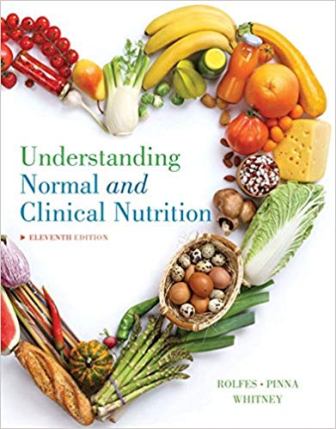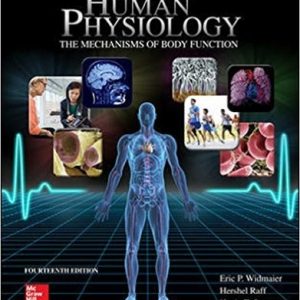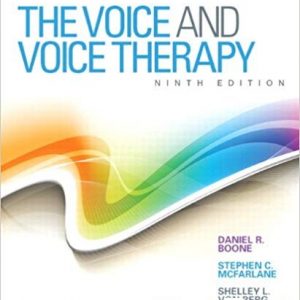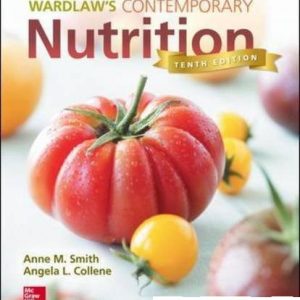This is completed downloadable of Test Bank for Understanding Normal and Clinical Nutrition, 11th Edition, Sharon Rady Rolfes, ISBN-10: 133709806X, ISBN-13: 9781337098069
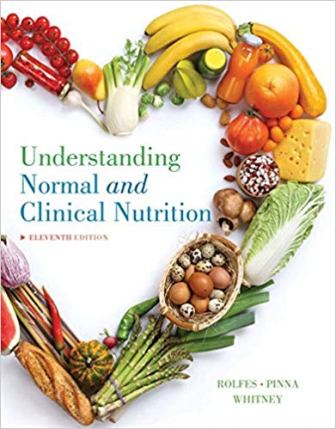
Product Details:
- ISBN-10 : 133709806X
- ISBN-13 : 978-1337098069
- Author: Sharon Rady Rolfes
Nourish your mind with UNDERSTANDING NORMAL AND CLINICAL NUTRITION, 11e! Start by learning about normal nutrition, including the impacts of food and nutrients on your mental and physical health, and then turn your focus to the clinical side of nutrition and the therapeutic care of people with health problems. Packed with practical information and resources, this text is designed to help you understand and apply nutrition concepts to your daily life as well as clinical settings. Features in the text include real-life case studies and questions, step-by-step “How To” instruction, detailed illustrations, intriguing vignettes, a full glossary, and much more. Regardless of your background, the authors enthusiasm, student-friendly writing, careful explanations, and current topics will inspire you to take a healthy look at the field of nutrition!
Table of Content:
- Ch 1: An Overview of Nutrition
- 1-1 Food Choices
- 1-2 The Nutrients
- 1-3 The Science of Nutrition
- 1-4 Dietary Reference Intakes
- 1-5 Nutrition Assessment
- 1-6 Diet and Health
- Highlight 1: Nutrition Information and Misinformation
- Ch 2: Planning a Healthy Diet
- 2-1 Principles and guidelines
- 2-2 Diet-Planning Guides
- 2-3 Food Labels
- Highlight 2: Vegetarian Diets
- Ch 3: Digestion, Absorption, and Transport
- 3-1 Digestion
- 3-2 Absorption
- 3-3 The Circulatory Systems
- 3-4 The Health and Regulation of the GI Tract
- Highlight 3: Common Digestive Problems
- Ch 4: The Carbohydrates: Sugars, Starches, and Fibers
- 4-1 The Chemist’s View of Carbohydrates
- 4-2 Digestion and Absorption of Carbohydrates
- 4-3 Glucose in the Body
- 4-4 Health Effects and Recommended Intakes of Sugars
- 4-5 Health Effects and Recommended Intakes of Starch and Fibers
- Highlight 4: Carbs, kCalories, and Controversies
- Ch 5: The Lipids: Triglycerides, Phospholipids, and Sterols
- 5-1 The Chemist’s View of Fatty Acids and Triglycerides
- 5-2 The Chemist’s View of Phospholipids and Sterols
- 5-3 Digestion, Absorption, and Transport of Lipids
- 5-4 Lipids in the Body
- 5-5 Health Effects and Recommended Intakes of Saturated Fats, Trans Fats, and Cholesterol
- 5-6 Health Effects and Recommended Intakes of Monounsaturated and Polyunsaturated Fats
- Highlight 5: High-Fat Foods-Friend or Foe?
- Ch 6: Protein: Amino Acids
- 6-1 The Chemist’s View of Proteins
- 6-2 Digestion and Absorption of Proteins
- 6-3 Proteins in the Body
- 6-4 Protein in Foods
- 6-5 Health Effects and Recommended Intakes of Protein
- Highlight 6: Nutritional Genomics
- Ch 7: Energy Metabolism
- 7-1 Chemical Reactions in the Body
- 7-2 Breaking Down Nutrients for Energy
- Highlight 7: Alcohol in the Body
- Ch 8: Energy Balance and Body Composition
- 8-1 Energy Balance
- 8-2 Energy In: The kCalories Foods Provide
- 8-3 Energy Out: The kCalories the Body Expends
- 8-4 Body Weight and Body Composition
- 8-5 Health Risks Associated with Body Weight and Body Fat
- Highlight 8: Eating Disorders
- Ch 9: Weight Management: Overweight, Obesity, and Underweight
- 9-1 Overweight and Obesity
- 9-2 Causes of Overweight and Obesity
- 9-3 Problems of Overweight and Obesity
- 9-4 Aggressive Treatments for Obesity
- 9-5 Weight-Loss Strategies
- 9-6 Underweight
- Highlight 9: The Latest and Greatest Weight-Loss Diet-Again
- Ch 10: The Water-Soluble Vitamins: B Vitamins and Vitamin C
- 10-1 The Vitamins-An Overview
- 10-2 The B Vitamins
- 10-3 Vitamin C
- Highlight 10: Vitamin and Mineral Supplements
- Ch 11: The Fat-Soluble Vitamins: A, D, E, and K
- 11-1 Vitamin A and Beta-Carotene
- 11-2 Vitamin D
- 11-3 Vitamin E
- 11.4 Vitamin K
- Highlight 11: Antioxidant Nutrients in Disease Prevention
- Ch 12: Water and the Major Minerals
- 12-1 Water and the Body Fluids
- 12-2 The Minerals-An Overview
- 12-3 The Major Minerals
- Highlight 12: Osteoporosis and Calcium
- Ch 13: The Trace Minerals
- 13-1 The Trace Minerals-An Overview
- 13-2 The Trace Minerals
- 13-3 Contaminant Minerals
- Highlight 13: Phytochemicals and Functional Foods
- Ch 14: Life Cycle Nutrition: Pregnancy and Lactation
- 14-1 Nutrition Prior to Pregnancy
- 14-2 Growth and Development during Pregnancy
- 14-3 Maternal Weight
- 14-4 Nutrition during Pregnancy
- 14-5 High-Risk Pregnancies
- 14-6 Nutrition during Lactation
- Highlight 14: Fetal Alcohol Syndrome
- Ch 15: Life Cycle Nutrition: Infancy, Childhood, and Adolescence
- 15-1 Nutrition during Infancy
- 15-2 Nutrition during Childhood
- 15-3 Nutrition during Adolescence
- Highlight 15: Childhood Obesity and the Early Development of Chronic Diseases
- Ch 16: Life Cycle Nutrition: Adulthood and the Later Years
- 16-1 Nutrition and Longevity
- 16-2 The Aging Process
- 16-3 Energy and Nutrient Needs of Older Adults
- 16-4 Nutrition-Related Concerns of Older Adults
- 16-5 Food Choices and Eating Habits of Older Adults
- Highlight 16: Hunger and Community Nutrition
- Ch 17: Nutrition Care and Assessment
- 17-1 Nutrition in Health Care
- 17-2 Nutrition Assessment
- Highlight 17: Nutrition and Immunity
- Ch 18: Nutrition Intervention
- 18-1 Implementing Nutrition Care
- 18-2 Energy Intakes in Hospital Patients
- 18-3 Dietary Modifications
- Highlight 18: Food Allergies
- Ch 19: Medications, Diet-Drug Interactions, and Herbal Products
- 19-1 Medications in Disease Treatment
- 19-2 Diet-Drug Interactions
- 19-3 Herbal Supplements
- Highlight 19: Complementary and Alternative Medicine
- Ch 20: Enteral Nutrition Support
- 20-1 Oral Supplements
- 20-2 Tube Feedings in Medical Care
- 20-3 Enteral Formulas
- 20-4 Administration of Tube Feedings
- Highlight 20: Inborn Errors of Metabolism
- Ch 21: Parenteral Nutrition Support
- 21-1 Indications for Parenteral Nutrition
- 21-2 Parenteral Solutions
- 21-3 Administering Parenteral Nutrition
- 21-4 Nutrition Support at Home
- Highlight 21: Ethical Issues in Nutrition Care
- Ch 22: Metabolic and Respiratory Stress
- 22-1 The Body’s Responses to Stress and Injury
- 22-2 Nutrition Treatment of Acute Stress
- 22-3 Respiratory Stress
- Highlight 22: Multiple Organ Dysfunction Syndrome
- Ch 23: Upper Gastrointestinal Disorders
- 23-1 Conditions Affecting the Esophagus
- 23-2 Conditions Affecting the Stomach
- 23-3 Gastric Surgery
- Highlight 23: Oral Health and Chronic Illness
- Ch 24: Lower Gastrointestinal Disorders
- 24-1 Common Intestinal Problems
- 24-2 Malabsorption
- 24-3 Conditions Affecting the Pancreas
- 24-4 Conditions Affecting the Small Intestine
- 24-5 Conditions Affecting the Large Intestine
- Highlight 24: Probiotics and Intestinal Health
- Ch 25: Liver Disease and Gallstones
- 25-1 Fatty Liver and Hepatitis
- 25-2 Cirrhosis
- 25-3 Liver Transplantation
- 25-4 Gallstone Disease
- Highlight 25: Anemia in Illness
- Ch 26: Diabetes Mellitus
- 26-1 Overview of Diabetes Mellitus
- 26-2 Treatment of Diabetes Mellitus
- 26-3 Diabetes Management in Pregnancy
- Highlight 26: The Metabolic Syndrome
- Ch 27: Cardiovascular Diseases
- 27-1 Atherosclerosis
- 27-2 Coronary Heart Disease (CHD)
- 27-3 Stroke
- 27-4 Hypertension
- 27-5 Heart Failure
- Highlight 27: Coping with Feeding Disabilities
- Ch 28: Kidney Diseases
- 28-1 Functions of the Kidneys
- 28-2 The Nephrotic Syndrome
- 28-3 Acute Kidney Injury
- 28-4 Chronic Kidney Disease
- 28-5 Kidney Stones
- Highlight 28: Dialysis
- Ch 29: Cancer and HIV Infection
- 29-1 Cancer
- 29-2 HIV Infection
- Highlight 29: Foodborne Illness
- Appendixes
- Appendix A: Cells, Hormones, and Nerves
- Appendix B: Basic Chemistry Concepts
- Appendix C: Biochemical Structures and Pathways
- Appendix D: Measures of Protein Quality
- Appendix E: Nutrition Assessment: Supplemental Information
- Appendix F: Estimated Energy Needs
- Appendix G: Choose Your Foods: Food Lists for Diabetes and Weight Management
- Appendix H: Table of Food Composition
- Appendix J: Healthy People 2020
- Appendix K: Aids to Calculation
- Appendix L: Enteral Formulas
- Glossary
- Index

